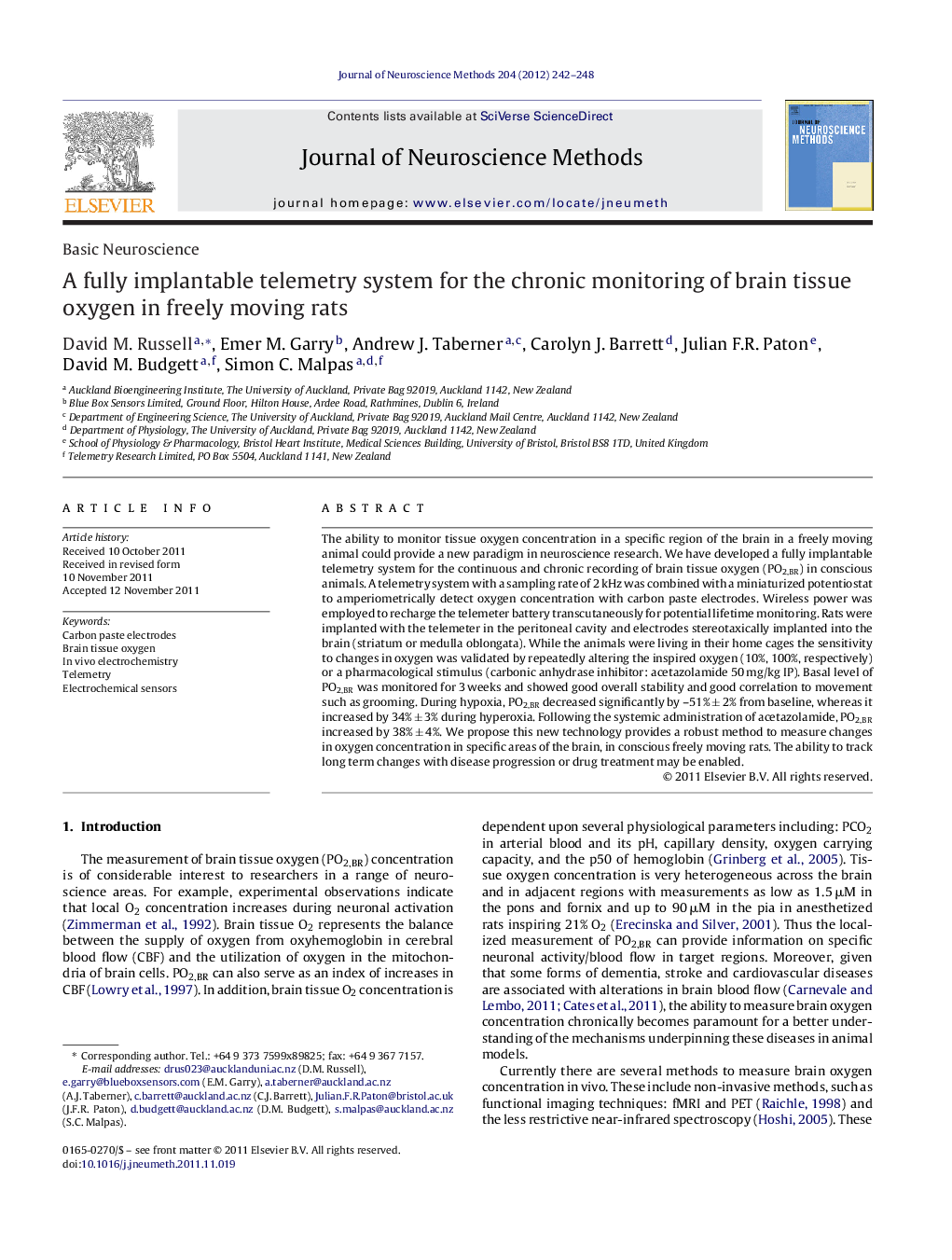| Article ID | Journal | Published Year | Pages | File Type |
|---|---|---|---|---|
| 6269373 | Journal of Neuroscience Methods | 2012 | 7 Pages |
The ability to monitor tissue oxygen concentration in a specific region of the brain in a freely moving animal could provide a new paradigm in neuroscience research. We have developed a fully implantable telemetry system for the continuous and chronic recording of brain tissue oxygen (PO2,BR) in conscious animals. A telemetry system with a sampling rate of 2 kHz was combined with a miniaturized potentiostat to amperiometrically detect oxygen concentration with carbon paste electrodes. Wireless power was employed to recharge the telemeter battery transcutaneously for potential lifetime monitoring. Rats were implanted with the telemeter in the peritoneal cavity and electrodes stereotaxically implanted into the brain (striatum or medulla oblongata). While the animals were living in their home cages the sensitivity to changes in oxygen was validated by repeatedly altering the inspired oxygen (10%, 100%, respectively) or a pharmacological stimulus (carbonic anhydrase inhibitor: acetazolamide 50 mg/kg IP). Basal level of PO2,BR was monitored for 3 weeks and showed good overall stability and good correlation to movement such as grooming. During hypoxia, PO2,BR decreased significantly by -51% ± 2% from baseline, whereas it increased by 34% ± 3% during hyperoxia. Following the systemic administration of acetazolamide, PO2,BR increased by 38% ± 4%. We propose this new technology provides a robust method to measure changes in oxygen concentration in specific areas of the brain, in conscious freely moving rats. The ability to track long term changes with disease progression or drug treatment may be enabled.
⺠Fully implantable telemetry system for the measurement of brain tissue oxygen. ⺠Suitable for continuous and chronic measurement of in vivo oxygen concentration. ⺠Allows measurement without tethers from a conscious and freely moving rat. ⺠Validated with repeated hypoxia/hyperoxia. ⺠Demonstrated measurement with chronic pharmacological intervention.
